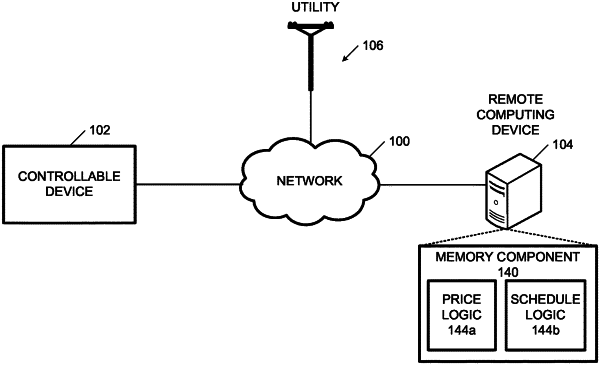| CPC G05B 19/042 (2013.01) [G06Q 30/0206 (2013.01); G06Q 50/06 (2013.01); G05B 2219/2639 (2013.01)] | 12 Claims |

|
1. A method for dynamically providing arbitrage on cost of energy in a controllable device configured to store and discharge energy, the method comprising:
determining a plurality of future energy prices for more than two time periods, wherein each of the future energy prices represents a price of a unit of energy over a predetermined time period;
predicting a duration to charge a controllable device;
determining a current discharge capacity of the controllable device, the current discharge capacity being an amount of energy that can be discharged from the controllable device based on its current state of charge;
predicting a duration to discharge the controllable device by dividing the current discharge capacity by a future discharge demand on the controllable device;
correlating the duration to charge the controllable device with at least one predetermined time period based at least in part on the price per unit energy over the at least one predetermined time period;
correlating the duration to discharge the controllable device with at least two non-sequential predetermined time periods based at least in part on the plurality of future energy prices including the price per unit energy over the at least two non-sequential predetermined time periods, correlating the duration to discharge comprising determining a discharge strike price by:
sorting the plurality of future energy prices for the more than two time periods in an order from the highest price to the lowest price generating a sorted list of the future energy prices each corresponding to a respective time period;
walking down the sorted list and stopping at a time period when the discharge duration is less than the sum of the duration of the time periods walked; and
the future energy price corresponding to the stopped time period being the discharge strike price;
directing the controllable device to discharge when a current energy price is at or above the discharge strike price; and
directing a utility to charge the controllable device at the at least one predetermined time period.
|